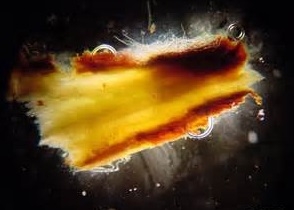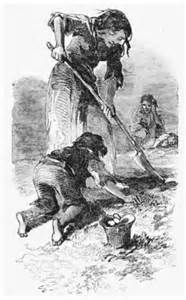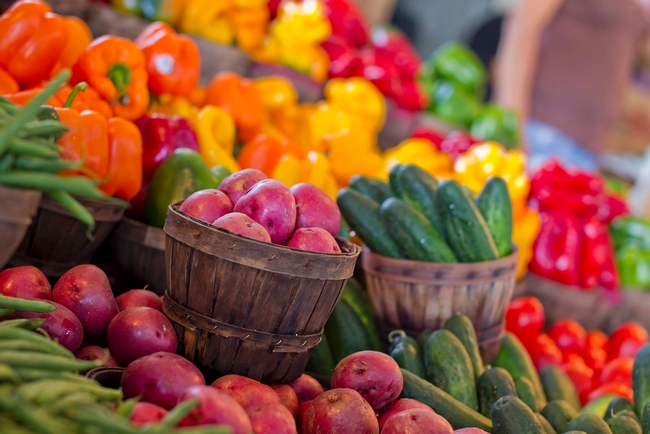Posts Tagged: bacteria
Sustainable food systems depend on healthy plants
Discolored leaves. Decaying roots. Dead wood. Mother Nature offers a fascinating and colorful backdrop of clues to track microscopic killers. Much like any medical mystery, experts are called in to diagnose or identify a disease from its symptoms and recommend management strategies to prevent further damage or loss of healthy plants.
In the world of crop science mysteries, plant pathology solves the crime. The usual suspects include bacteria, fungi and viruses.
Humans and animals depend on plants for their food supply and ultimately for their survival. When diseases threaten crops, a high-quality, affordable food supply is placed at risk. For growers, plant diseases can reduce crop yields. For consumers, reduced crop yields can drive higher food prices. Plant pathology research holds enormous implications for a sustainable food supply.
Florent Trouillas, who was named UC Cooperative Extension specialist in the Department of Plant Pathology at UC Davis and the Kearney Agricultural Research and Extension Center last year, explains the bottom line of most concern to growers.
"Once we identify a disease causal agent, a main question remains from growers. What growers really want to know is how to control the disease and prevent its spread to new healthy plants; they look to the University of California for solutions," Trouillas said.
A crisis in the food production system can impact other areas of society as well. In fact, history is filled with examples of how plant diseases influenced economies, environments and human societies.
Trouillas cites one of the most well-known examples in plant pathology: the Great Famine. Millions of Irish immigrants relocated to the United States in the mid-1800s after a terrible potato blight led to widespread starvation in Ireland. Experiments conducted in 1861 by Anton deBary, considered to be one of the founding fathers of plant pathology, proved the blight was caused by a fungus, which we now know is an oomycete. This plant disease had a direct impact on the Irish society with a subsequent Irish immigration wave into America.
Another historical illustration of plant pathology research occurred in the 1920s. The most common trees in the forests of the United States at the turn of the century were the majestic American chestnuts. The trees generated income for humans and the timber industry, served as a food source for people and animals, and provided habitat for wildlife. Then the trees started dying, until by the late 1920s, they had become the first tree in modern times on the brink of extinction. Plant pathologists were particularly adept at identifying plant diseases by this time and diagnosed the Cryphonectria parasitica fungus as the cause of the chestnut blight. By preventing the extinction of the pivotal species, plant pathology had a direct impact on the economy and the environment.
More recent major plant disease outbreaks in the United States involving plant pathology research have included Sudden Oak Death with devastating effects in California and Oregon forests, pitch canker killing California native pine species, and citrus canker in Florida, which has had a huge economic impact on the industry.
Veterinarians treat diseases in animals, physicians in humans. Trouillas describes the role of plant pathologists in similar terms. “We study the pathology of plant systems. Plant pathologists treat plants," he said.
Healthy plants ensure a sustainable food source and habitat for so many other organisms, including the human species.
What's in your compost?
For home gardeners, spring is a busy time of year and there’s never a tomato with more flavor than one grown to full ripeness on the vine. But there are also many safety precautions to follow to prevent contamination of fruits and vegetables with pathogens that cause serious food-borne illnesses.
Michele Jay-Russell, a veterinarian and research microbiologist at the Western Institute for Food Safety and Security (WIFSS) and program manager of the Western Center for Food Safety (WCFS), recently co-authored a study that highlights the need to be aware of the hazards associated with using raw animal manure to fertilize home gardens. (Read full article here.)
The basis for the study began in July of 2010 when a shire mare from a rural Northern California farm was brought to the William R. Pritchard Veterinary Medical Teaching Hospital for treatment of colic. Following protocol, the veterinarians on call screened the horse for Salmonella to avoid infecting other horses during hospitalization. She tested positive and after successful treatment for colic, went home. Her owners then notified the veterinarians that some of their other draft horses were sick as well — all 8 were tested and 6 came back positive for the same Salmonella Oranienburg strain, including the mare that still had the infection.
Jay-Russell heard about the case from her colleague John Madigan, professor of medicine and epidemiology at the school. The farm’s owners invited Jay-Russell and Madigan to the farm to see if they could uncover the source of the Salmonella infection. They sampled water from horse troughs, manure storage piles, wild turkey feces and soil from the family’s edible home garden where raw horse manure had been used as fertilizer. Each of those locations had a percentage of positive samples over the sampling period from August 2010 to March 2011.
“We showed the owners how to continue collecting samples and provided them with a FedEx number to ship them to UC Davis,” Jay-Russell said. “During that whole time, the garden soil kept coming back positive, which showed that this strain of Salmonella could persist for months.”
While the researchers couldn’t be completely certain about the original source of Salmonella on the farm, they suspect that a recent surge in the wild turkey population on the property introduced the bacteria to the horses by pooping in the horse corrals and in the water troughs. They speculated that the wild turkeys brought the Salmonella onto the property, although they couldn’t rule out the possibility that the birds were exposed on the farm or to other potential sources of Salmonella.
“What is clearer is that the raw horse manure applied as fertilizer was the most likely source of garden soil contamination,” Jay-Russell explained. “We suspect that the damp climate in Mendocino County may have contributed to the longevity of this bacterium in the soil long after the owners stopped applying the horse manure to the garden. Fortunately, the owners didn’t get sick, but our investigation showed the potential for widespread dissemination of Salmonella in a farm environment following equine infection.”
To promote safe gardening practices, Jay-Russell has teamed with Trevor Suslow, a Cooperative Extension food safety specialist in the Department of Plant Sciences, to speak to groups of small farmers around the state about best practices. They also use a brochure in English and Spanish, “Food Safety Tips for Your Edible Home Garden,” that includes information about safe uses of animal manure and ways to minimize animal fecal contamination.
“It’s good to let people know about the risks and to correct misinformation about ways to treat the compost pile before using it in the garden,” Jay-Russell said. “The biggest take home message from this experience is to be very careful about using manure from sick horses — and to be cautious about offers of free manure — you don’t know what’s in there. Commercial compost should be bought from a reputable source.”
She urges gardeners to take a class and learn how to compost correctly and safely. Each county in California has UC Cooperative Extension advisors and many have Master Gardener programs offering information on food safety.
Additional resources:
Foodborne illnesses and the 100K Genome Project
An ambitious effort to sequence the genomes of 100,000 infectious microorganisms and speed diagnosis of foodborne illnesses has been launched by the University of California, Davis, Agilent Technologies, and the U.S. Food and Drug Administration.
Bart Weimer, professor in the UC Davis School of Veterinary Medicine, serves as director of the 100K Genome Project and co-director of the recently established BGI@UC Davis facility, where the sequencing will be done. Other collaborators include the U.S. Centers for Disease Control and Prevention and the U.S. Department of Agriculture.
The new five-year microbial pathogen project focuses on making the food supply safer for consumers. The group will build a free, public database including sequence information for each pathogen's genome — the complete collection of its hereditary information. The database will contain the genomes of important foodborne pathogens including Salmonella, Listeria, and E. coli, as well as the most common foodborne and waterborne viruses that sicken people and animals.
The project will provide a roadmap for developing tests to identify pathogens and help trace their origins more quickly. The new genome database also will enable scientists to make discoveries that can be used to develop new methods for controlling disease-causing bacteria in the food chain.
"This landmark project will revolutionize our basic understanding of these disease-causing microorganisms," said Harris Lewin, vice chancellor for research at UC Davis.
The sequencing project is critically important for tackling the continuing outbreaks of often-deadly foodborne diseases around the world. In the United States alone, foodborne diseases annually sicken 48 million people and kill 3,000, according to the CDC.
"The lack of information about food-related bacterial genomes is hindering the research community's ability to improve the safety and security of the world food supply," Weimer said. "The data provided by the 100K Genome Project will make diagnostic tests quicker, more reliable, more accurate and more cost-effective."
"We see this project as a way to improve quality of life for a great many people, while minimizing a major business risk for food producers and distributors," said Mike McMullen, president of Agilent’s Chemical Analysis Group.
A consumer-focused article about the project is available on the FDA website.
(This article was condensed from a UC Davis news release. Read the full press release and watch a video of Bart Weimer giving an overview of the project.)
Enjoy summer’s fruits and vegetables — safely
Now that we’re in the thick of summer and eating bountiful quantities of uncooked fresh fruits and vegetables (salads, and fruit bowls, and tomatoes — oh my!), it’s time to make sure we handle them properly to avoid foodborne illnesses.
According to Dr. Trevlor Suslow, a plant pathologist and Cooperative Extension specialist at UC Davis, “Americans consume more than six billion servings of uncooked fresh fruits and vegetables every year, versus a very small number of illnesses that are clearly linked to foodborne pathogens.”
The take-home message is that the food supply in the U.S. is generally very safe, particularly when everyone in the food supply chain (including consumers) does their part to assure food safety.
The U.S. Food and Drug Administration (FDA) recently released the following information for home consumers:
Nearly 48 million people (1 in 6 people) are sickened by food contaminated with harmful germs each year, and some of the causes might surprise you.
Although most people know animal products must be handled carefully to prevent illness, many don’t realize that produce can also be the culprit in foodborne illness. In recent years, the U.S. has had several outbreaks of illness caused by contaminated fruits and vegetables — including spinach, tomatoes, and lettuce.
Fresh produce can become contaminated in many ways. During the growing phase, fruits and veggies may be contaminated by animals, harmful substances in the soil or water, and poor worker hygiene. After produce is harvested, it passes through many hands, increasing the contamination risk. Contamination can even occur after the produce has been purchased, during food preparation, or through inadequate storage.
The FDA says to choose produce that isn’t bruised or damaged, and make sure that pre-cut items — such as bags of lettuce or watermelon slices — are either refrigerated or on ice both in the store and at home. In addition, follow these recommendations:
- Wash your hands for 20 seconds with water and soap before and after preparing fresh produce.
- Cut away any damaged or bruised areas before preparing or eating.
- Gently rub produce while holding under plain running water. There’s no need to use soap or a produce wash.
- Wash produce BEFORE you peel it, so dirt and bacteria aren’t transferred from the knife onto the fruit or vegetable.
- Use a clean vegetable brush to scrub firm produce, such as melons and cucumbers.
- Dry produce with a clean cloth or paper towel to further reduce bacteria that may be present.
- Throw away the outermost leaves of a head of lettuce or cabbage.
Store perishable produce in the refrigerator at 40 degrees or below.
(Condensed from an FDA news release. The site has an interesting video and useful links to other sites with food safety information.)
For more on what UC Davis and UC Cooperative Extension are doing to assure the safety of fresh produce:
- UC Food Safety website
- Postharvest Technology Center website
- Center for Produce Safety website
- UC publications
The more you know, the more careful you are
With a daughter soon to complete a degree in health safety, discussions of Salmonella, E. coli and the like sometimes arise as we sit around the dinner table. As an agriculturally focused family, we like to think we’re pretty savvy about the best way to handle our produce to keep it safe and tasty.
Some are very concerned about food safety. A gentleman phoned the Postharvest Technology Center a few months ago, and shared that he was very concerned about eating strawberries. He thought perhaps he should scrub each one with a soft toothbrush, and then soak them in a diluted chlorine bath.
Others are much less aware of food safety concerns, sometimes using cutting boards and knives interchangeably between raw meat and produce items, or other unsafe food handling practices.
Dr. Roberta Cook, a marketing and postharvest specialist affiliated with the center reported, “in 2008, 53 percent of shoppers interviewed in a national survey by the Food Marketing Institute, named ‘bacteria or germs’ as a serious health risk to their food, ranking it as their number one concern.” The produce industry and the U.S. Food and Drug Administration continue to work hard to establish safe procedures for every step between the farm and the market.
Dr. Linda Harris, a food safety specialist, and Dr. Christine Bruhn, a consumer food marketing dpecialist, also affiliated with the Postharvest Technology Center, offer the following concise steps for the safe handling of produce:
- In the grocery cart and at home, keep fruits and vegetables separated from raw meat, poultry, and seafood to prevent cross-contamination.
- Once at home, store all fresh-cut ready-to-eat prepared produce in the refrigerator to keep it cold.
- Wash all whole fruits and vegetables, including larger items like melons, just before preparation for eating. Cut out damaged (bruised, discolored) areas before eating.
- Before and after handling fruits and vegetables, make sure that your work area and utensils are clean and that your hands have been washed with hot soapy water.
- Fruits and vegetables should be washed under running water. Soaking them in water increases the opportunity for cross-contamination and is not recommended.
- Produce such as apples, cucumbers and melons that can be rubbed without damage should be scrubbed using clean hands or a clean scrub brush.
- Dry washed fruits and vegetables with clean disposable paper towels.
- It is not necessary to wash ready-to-eat prewashed and packaged fresh-cut produce. If you choose to rewash this type of produce, follow the instructions above. Always wash unpackaged prepared salad mixes under running water prior to consumption.
- Once cut or prepared, all fruits and vegetables should be refrigerated promptly. After serving, refrigerate leftovers within 2 hours.
Additional produce safety resources:
"How to Properly Wash your Produce" video by Dr. Christine Bruhn.
For more University of California information about the safe handling of fruits and vegetables:
UC Home Gardening, Preservation and Storage Publications
Safe Handling of Fruits and Vegetables (pdf)
Food safety brochure (pdf)






![Food blog 01 5751417888 59f0a8c3ca m[1] Food blog 01 5751417888 59f0a8c3ca m[1]](http://ucanr.org/blogs/food/blogfiles/7859.jpg)
